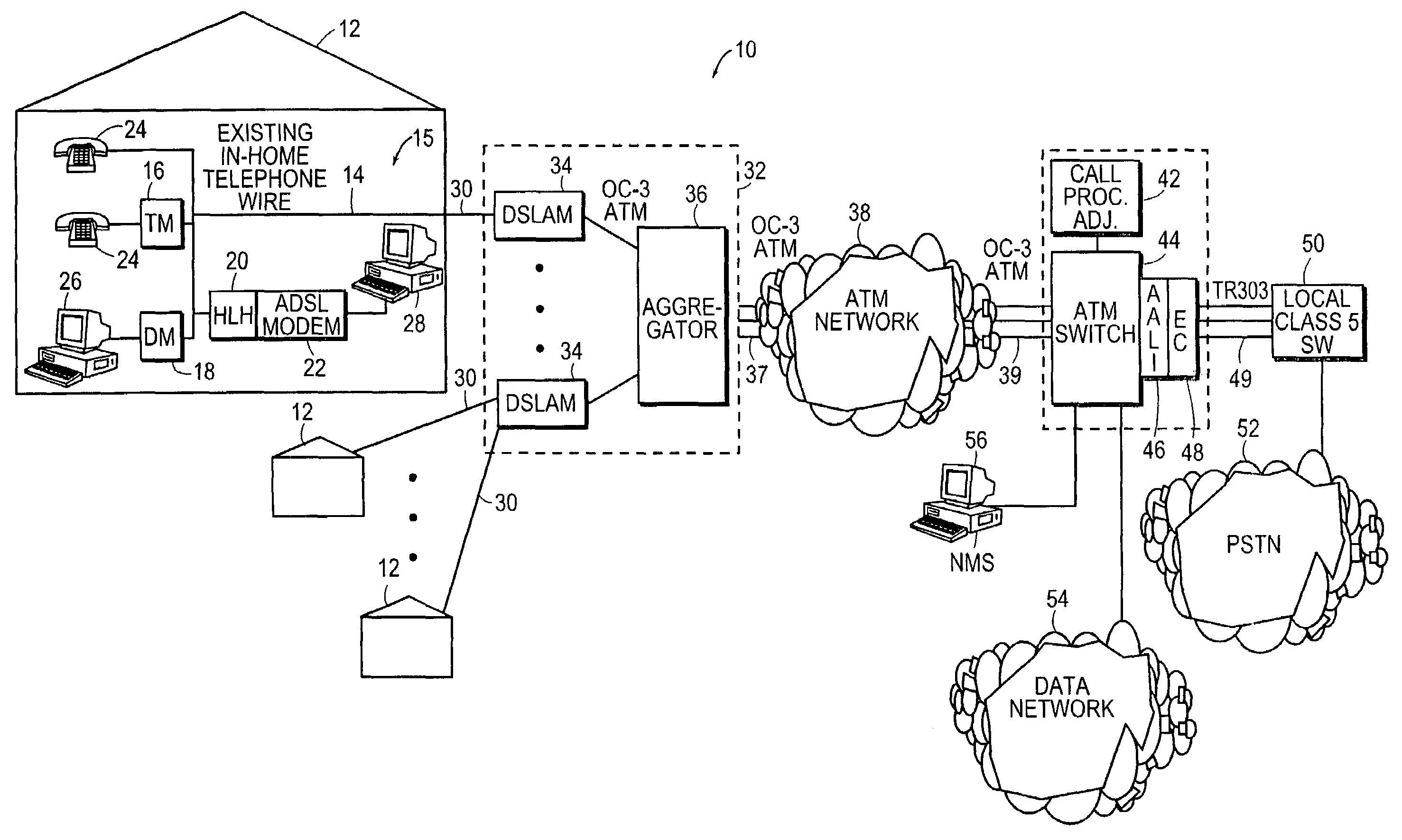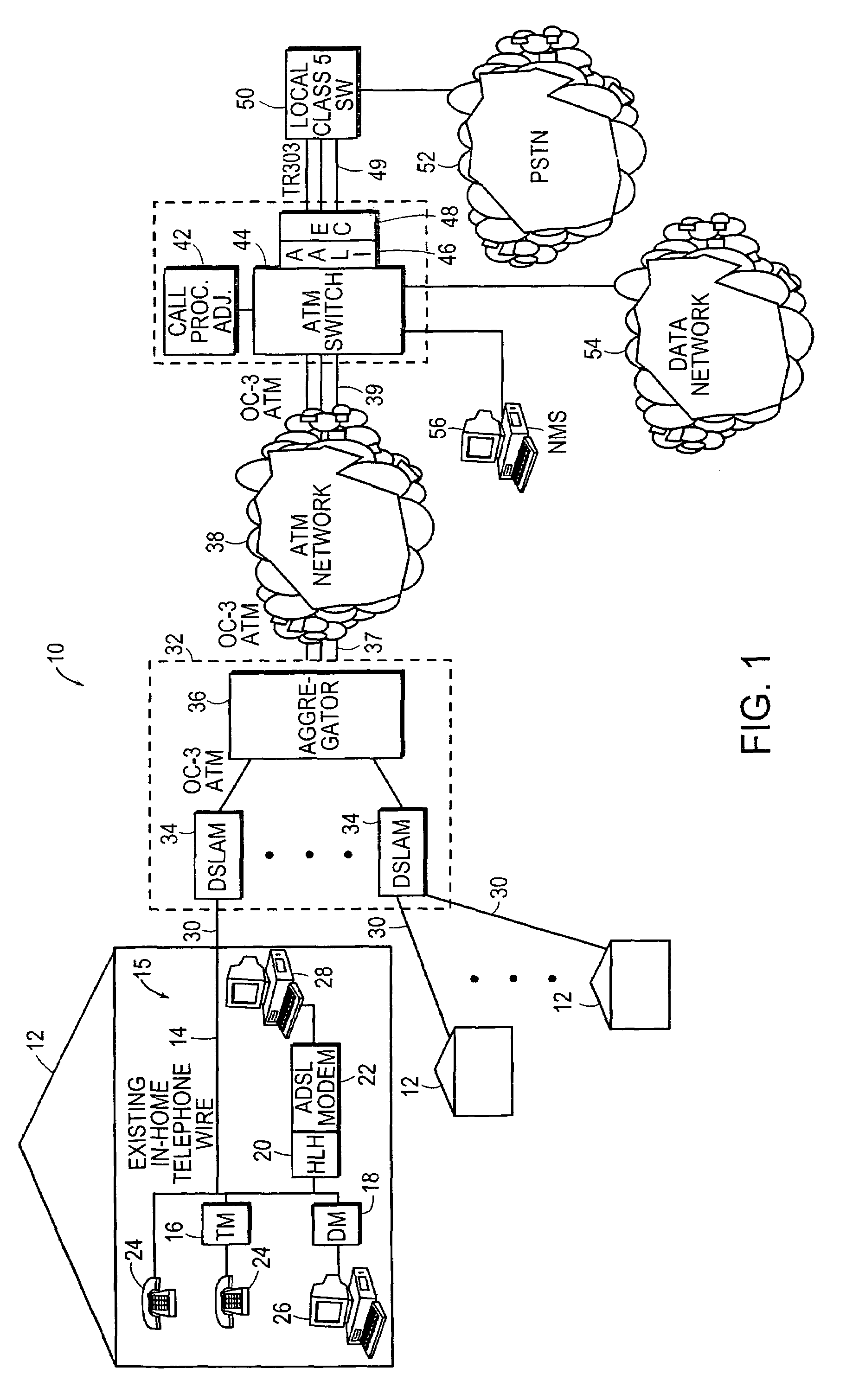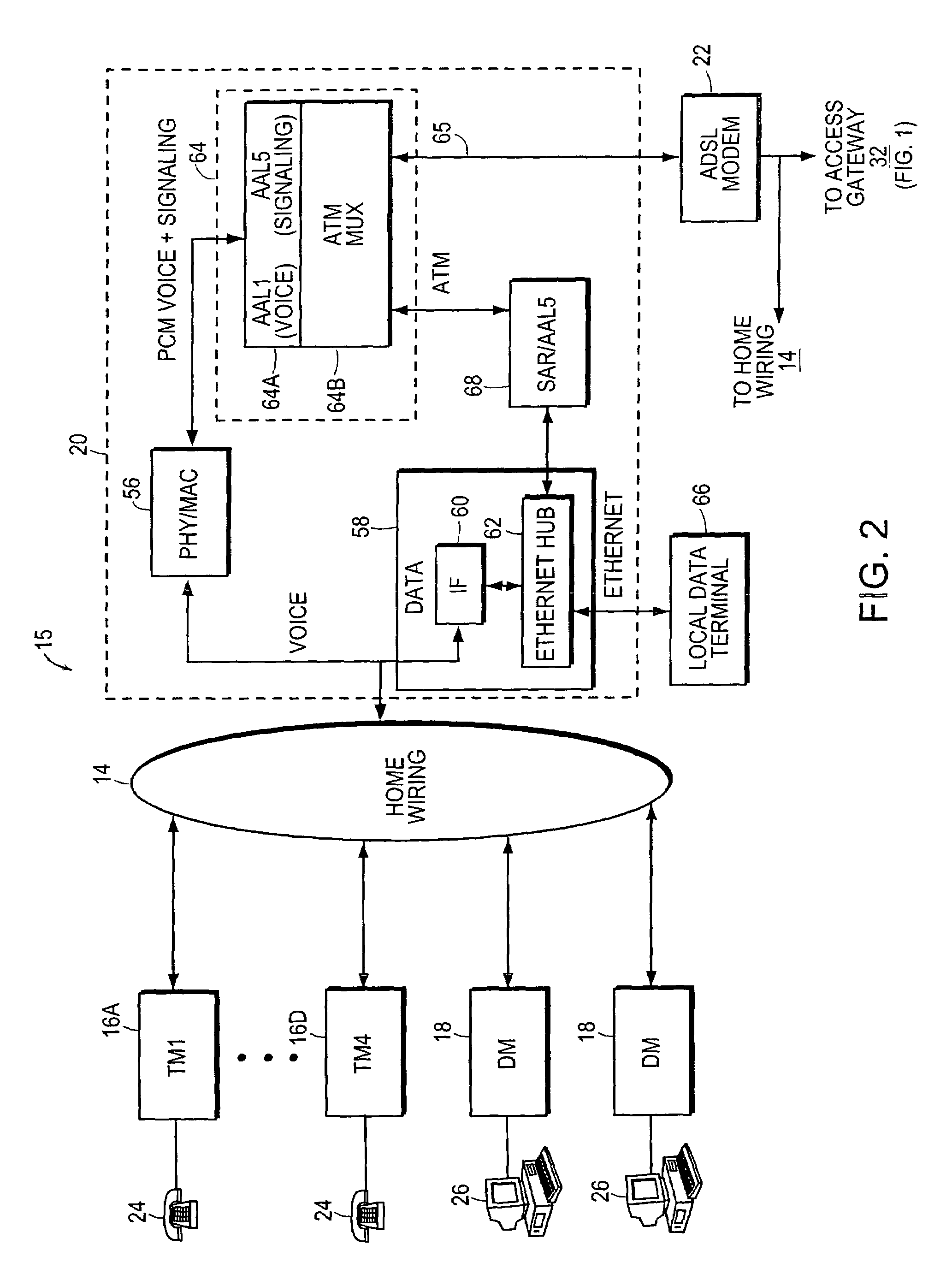Virtual loop carrier system with gateway protocol mediation
a carrier system and gateway protocol technology, applied in data switching networks, multiplex communication, digital transmission, etc., can solve the problems of manual labor, error-prone operations, administration and maintenance, and inflexible service creation and delivery platforms, so as to reduce service turn-up times and unit costs
- Summary
- Abstract
- Description
- Claims
- Application Information
AI Technical Summary
Benefits of technology
Problems solved by technology
Method used
Image
Examples
second embodiment
[0255]In the MAC layer operation, up to eight telephone modules are allowed to attach to the home LAN with each TM capable of supporting multiple phone numbers. In this embodiment, there is no hard assignment of timeslots to the TMs. Rather, timeslots are assigned on an as needed basis in a soft manner to the TMs. Using the same framing structure described above with respect to FIGS. 17 to 19, four simultaneous voice calls are allowed from among the eight TMs.
[0256]Referring now to FIG. 21, two TMs 16A and 16B are shown with corresponding port numbers 208, telephone numbers 210 and MAC addresses 212. Note that while eight TMs can be provisioned in this second embodiment of the MAC layer operation, only two TMs are shown for simplicity. Each TM has a specific TM port number 208 that is set using the dip switch 102 (FIG. 4) which is represented as a 3 bit port address. Each telephone number 210 is associated with a specific MAC address 212. A given phone number has the same MAC addres...
third embodiment
[0260]In a third embodiment, MAC layer operation provides for all timeslots to be used for voice calls. In particular, when one or more timeslots are idle and are not being used currently for voice calls, then one of these slots is used for making requests. In every downstream frame (FIG. 18), the first byte of the CTRLG field is used to show the status of each timeslot, regardless of whether a timeslot is being used (for a voice call), and is defined as follows:
[0261]
STAT_FIELDPOS1POS2POS3POS4POS5RSVD1 bit1 bit1 bit1 bit1 bit3 bits
A single bit set to one in bit position 1 indicates that timeslot 1 has been assigned to one of the TMs. If the bit is set to 0, then the timeslot is available (unassigned). A TM that goes off-hook immediately knows by looking at the STAT-FIELD which timeslots are available and which are taken. The TMs use the last available unassigned timeslot in the next upstream frame to request timeslots from the HLH.
[0262]Each TM is allowed to make its request in a p...
first embodiment
[0263]The following is a description of the state machines for the HLH and the TMs (FIG. 1) in relation to the MAC layer operation described herein above. The HLH includes four state machines, one for each telephone module. Referring to the state diagrams of FIGS. 22A to 22H, the description that follows relates to the state machine for an individual TM.
[0264]There are four states for each TM: unprovisioned (state 0), not connected (state 1), connected (state 2) and unregistered (state 5). Referring to FIG. 22A, at block 1002 the HLH powers up. A series of actions denoted by blocks 1004, 1006, 1008 are performed by the HLH prior to reaching the unprovisioned state at block 1014. The first action in block 1004 is to mark the particular TM as unregistered in the HLH memory. At block 1006, an idle / busy bit in the CTRLG field of the downstream frame is set to idle. A provisioned / unprovisioned indicator bit in the CTRLG field of the downstream frame is set as unprovisioned in block 1008....
PUM
 Login to View More
Login to View More Abstract
Description
Claims
Application Information
 Login to View More
Login to View More - R&D
- Intellectual Property
- Life Sciences
- Materials
- Tech Scout
- Unparalleled Data Quality
- Higher Quality Content
- 60% Fewer Hallucinations
Browse by: Latest US Patents, China's latest patents, Technical Efficacy Thesaurus, Application Domain, Technology Topic, Popular Technical Reports.
© 2025 PatSnap. All rights reserved.Legal|Privacy policy|Modern Slavery Act Transparency Statement|Sitemap|About US| Contact US: help@patsnap.com



